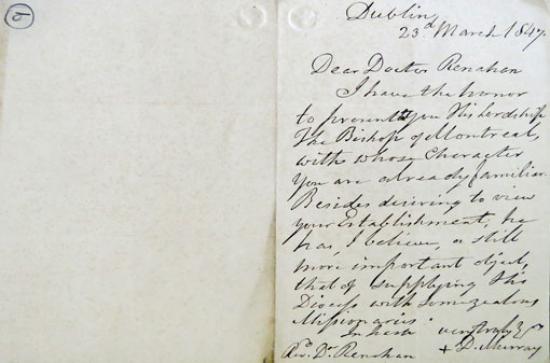
http://www.corkuniversitypress.com/Women-and-the-Great-Hunger-p/9780990945420.htm
Even considering recent advances in the development of women’s studies as a discipline, women remain underrepresented in the history and historiography of the Great Hunger. The various roles played by women, including as landowners, relief-givers, philanthropists, proselytizers and providers for the family, have received little attention.
This publication examines the diverse and still largely unexplored role of women during the Great Hunger, shedding light on how women experienced and shaped the tragedy that unfolded in Ireland between 1845 and 1852. In addition to more traditional sources, the contributors also draw on folklore and popular culture.
Women and the Great Hunger brings together the work of some of the leading researchers in Irish studies, with new scholarship, methodologies and perspectives. This book takes a major step toward advancing our understanding of the Great Hunger.
Christine Kinealy is Director of Ireland’s Great Hunger Institute at Quinnipiac University. Jason King is Irish Research Council Postdoctoral Research Fellow, National University of Ireland, Galway and Ciarn Reilly is a Research Fellow, Centre for the Study of Historic Irish Houses & Estates, Maynooth University
Contents
Introduction. ‘This expertise is hard won’. Women and the Great Hunger in Ireland
Steadfast Women
‘Never call me a novelist’: Cecil Woodham-Smith and the making of the Great Hunger – Christine Kinealy (Quinnipiac University)
Asenath Nicholson and school children in Ireland – Maureen Murphy (Quinnipiac University)
Agency and Action
‘Nearly starved to death’: The female petition during the Great Hunger – Ciaran Reilly (Maynooth University)
The women of county Leitrim respond to the hunger – Gerard McAtasney (Independent Scholar)
‘Meddlers amongst us: women, priests, and authority in Famine-era Ireland’ – Cara Delay (College of Charleston)
‘Nearly naked’: clothing and the Great Hunger in Ireland – Daphne Wolf (Drew University)
Hidden Histories
The Famine Irish, the Grey Nuns, and the fever sheds of Montreal: prostitution and female religious institution building – Jason King (National University of Ireland, Galway)
‘Permanent deadweight’: female pauper emigration from Mountbellew Workhouse to Canada – Gerard Moran (Maynooth University)
The Lore of women: Irish expressive culture in New England after the Great Hunger – Eileen Moore Quinn (College of Charleston)
Publicizing Pain
Keeping hope alive: Jane Elgee and the Great Famine Matthew Skwiat – (Rochester University)
‘Skeletons at the feast’: Lady Wilde’s poetry and 19th century Irish critiques of famine and empire – Amy Martin (Mount Holyoke College)
‘Revolting scenes of famine’: Frances Power Cobbe and the Great Hunger – Maureen O’Connor (University College Cork)
New Directions
Nature and nurture: The Great Famine and epigenetic change in Ireland – Oonagh Walsh (Glasgow Caledonian University)
Amongst strangers: The Sisters of Charity and the New York Famine Irish -Turlough McConnell (Turlough McConnell Communications)
Lady Sligo and her letters: mounting an inaugural exhibition – Sandy Letourneau O’Hare and Robert A. Young, Jr. (Arnold Bernhard Library, Quinnipiac University)
The Earl Grey Irish orphan scheme, 1848 -1850 and the Irish diaspora in Australia – Rebecca Abbott (Quinnipiac University)
Postscript and A woman’s place is on the curriculum – Ruth Riddick (Open Door Counselling)
































 From left: Minister Heather Humphreys, Dr Jason King, President Michael D. Higgins, and Professor Christine Kinealy.
From left: Minister Heather Humphreys, Dr Jason King, President Michael D. Higgins, and Professor Christine Kinealy.
















